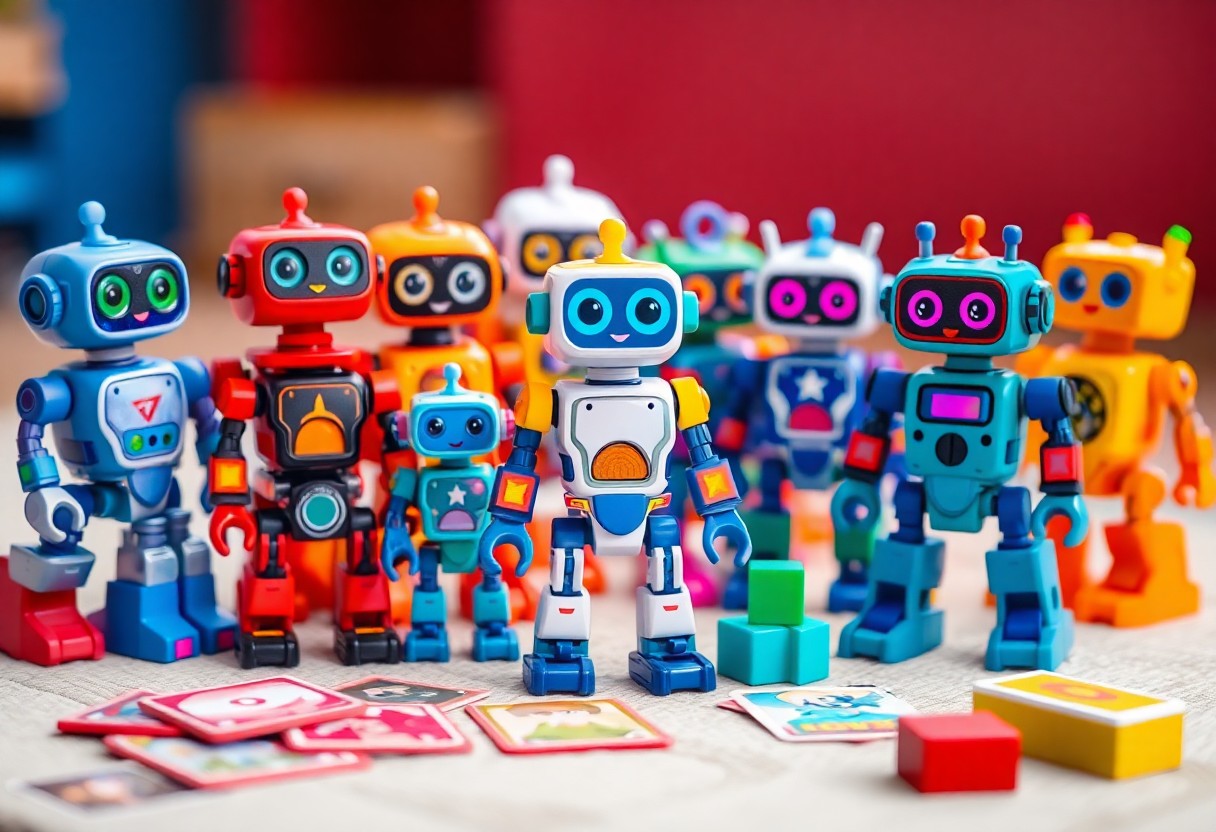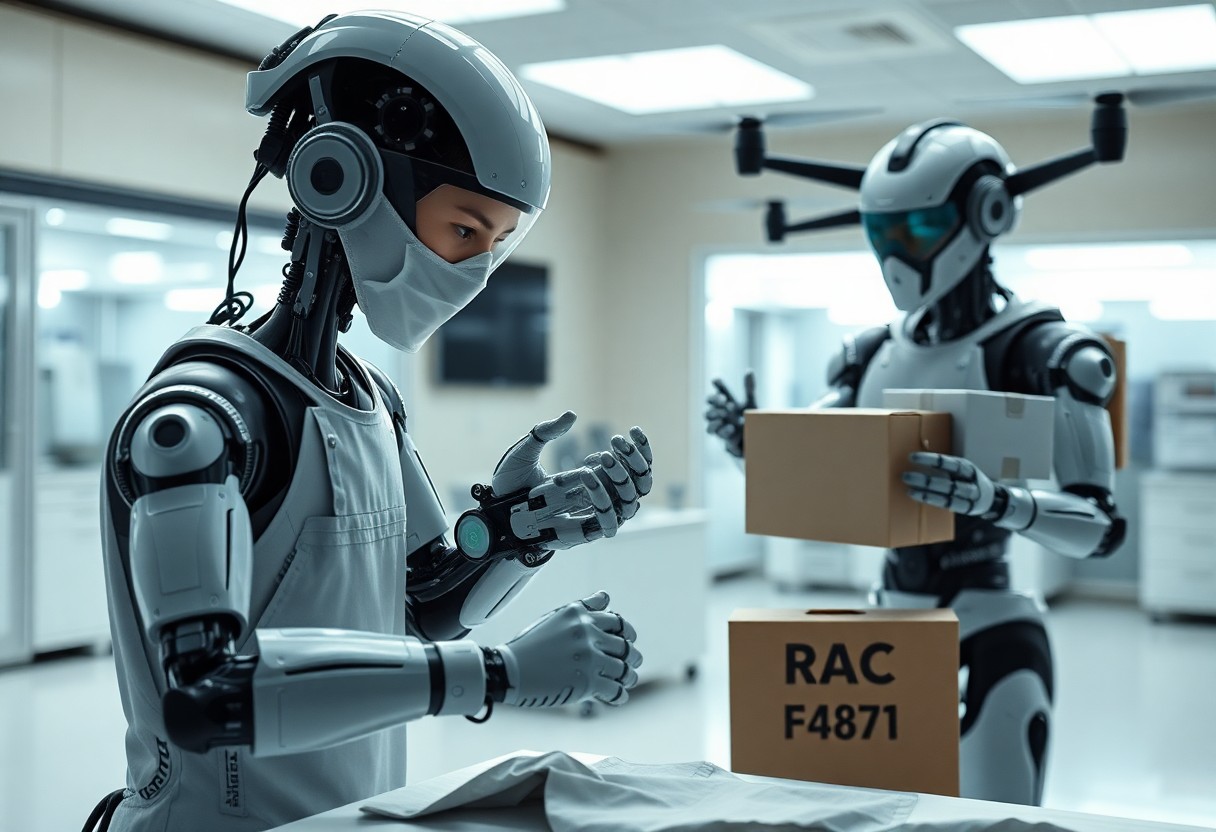It’s fascinating to see how robots are revolutionizing the way you manage routine tasks in your daily life and workplace. With advancements in artificial intelligence and robotics, these machines are now equipped to handle repetitive and time-consuming activities with efficiency and precision. In this blog post, you will explore how robots are designed to improve productivity, reduce errors, and free up your time for more complex endeavors. Discover the technology behind their capabilities and how they can transform your approach to mundane tasks.
The Nature of Routine Tasks
While routine tasks are often seen as mundane or repetitive, they play a significant role in various aspects of daily life and industry. These tasks typically involve activities that are performed consistently and predictably, such as data entry, assembly line production, or even household chores. By understanding the nature of these tasks, you can better appreciate the potential for robotic automation to enhance efficiency and productivity.
Definition and Examples
At its core, a routine task is a repetitive action that requires minimal decision-making and consistency. Examples include sorting documents, managing inventory, and even cooking repetitive meals. By identifying such tasks in your environment, you can assess where automation could bring notable improvements.
Importance in Various Industries
Across industries, routine tasks are crucial for maintaining stability and efficiency. They form the backbone of operations, allowing for standardized processes that help organizations meet demands consistently.
But the significance of routine tasks extends beyond mere efficiency; they ensure quality control and reduce the likelihood of human error. In manufacturing, for example, tasks such as assembling products or conducting quality checks are vital for delivering reliable results. Similarly, in healthcare, routine tasks like patient record management help streamline workflows and improve service delivery. By recognizing the importance of these tasks in your industry, you can harness robotic solutions to enhance operational performance and focus on more complex challenges.
The Role of Robotics
One of the most transformative advancements in modern technology is robotics, which plays an important role in streamlining routine tasks across various industries. By automating repetitive processes, robots enhance efficiency, reduce human error, and allow you to redirect your focus toward more strategic activities. As a result, your productivity can significantly improve, leading to overall optimization in work and daily life.
Understanding Robotic Automation
To comprehend the impact of robotic automation, you must recognize how these machines integrate into existing systems. Robotic automation utilizes algorithms and AI-driven capabilities to perform tasks with precision, ensuring a consistent output. With this in place, you can benefit from enhanced reliability and faster turnaround times for your projects.
Versatility in Task Execution
After the integration of robotics, you may find it surprising how versatile these machines can be in terms of task execution. From manufacturing to healthcare, robots can adapt to a variety of functions, making them indispensable across numerous sectors.
Further exploring this versatility, you will discover that modern robots are equipped with advanced sensors and programming capabilities that enable them to perform multiple roles. For instance, in a manufacturing setting, a robot might switch from assembly tasks to quality control inspections seamlessly. This adaptability not only maximizes your efficiency but also minimizes the need for extensive retraining or reprogramming, ultimately saving time and money in the long run.
Challenges Faced by Robots
You may wonder about the obstacles that robots encounter while performing routine tasks. These challenges can greatly influence their efficiency and reliability. For a deeper look into the biggest challenges for robotics advancement?, you’ll find insights into issues like hardware limitations, obstacle perception, and functional flexibility, all of which impact their routine operations.
Complexity of Routine Tasks
Behind every seemingly simple task lies a multitude of variables and complexities that robots must navigate. From recognizing different objects to dealing with unexpected changes in their environment, even routine actions become challenging when robots confront real-world unpredictability.
Adaptability and Learning Curve
At the core of robotic functionality is their ability to adapt to new tasks and environments. Overcoming the learning curve not only involves programming but also refining algorithms that allow robots to respond effectively to changing conditions and inputs.
Adaptability in robots is important for performing various tasks efficiently. It requires sophisticated algorithms and machine learning techniques to enable robots to learn from experience and adjust their methods accordingly. This continuous development allows robots to improve their performance over time, making them more effective in routine tasks, and helps them handle unforeseen circumstances with greater ease. The integration of such advanced capabilities can significantly enhance a robot’s usefulness in practical applications.
Technological Innovations
Not only have robots been designed to perform repetitive tasks, but recent technological innovations have greatly improved their efficiency and adaptability. Advancements in robotics are enabling machines to tackle varied workload environments seamlessly, elevating their capability beyond basic programming. You’ll find that these innovations not only streamline processes but also enhance overall productivity in various sectors.
AI and Machine Learning in Robotics
Technological progress in artificial intelligence and machine learning has revolutionized the field of robotics. You can see how algorithms enable robots to learn from their surroundings, adapting to new situations and optimizing their routines. By processing vast amounts of data, these robots can make informed decisions, enhancing their autonomy and performance over time, and ultimately transforming the way they handle tasks.
Sensor Technology and Perception
Behind the scenes, advanced sensor technology plays a significant role in how robots perceive their environment. Your understanding of robotics will further deepen when you recognize that sensors allow machines to detect obstacles, interpret surroundings, and identify objects accurately. This capability is necessary for operating effectively within dynamic settings.
Further innovations in sensor technology involve enhanced detection systems that allow robots to interact with their environment intuitively. By incorporating various types of sensors like cameras, LIDAR, and ultrasonic sensors, these machines can gather detailed information about their surroundings. You’ll appreciate how this data processing enables robots to navigate complex spaces, evaluate tasks, and make real-time adjustments, ensuring precision in routine operations. This advancement not only improves functionality but also enhances safety and reliability in various robotic applications.
Case Studies
Once again, examining case studies of robots in various sectors reveals the significant advantages they bring to routine tasks:
- Automotive Manufacturing: Companies report a 30% increase in production efficiency with robots on assembly lines.
- Electronics Assembly: Automation has decreased assembly time by 25%, leading to faster product launches.
- Warehouse Management: Implementing robotic systems has cut labor costs by 20% while boosting order accuracy by 35%.
- Healthcare Facilities: Robotic-assisted surgeries reduce hospital stays by 50%, enhancing patient recovery times.
- Agriculture: Autonomous robots have improved crop yield by 15% through precision farming techniques.
Robots in Manufacturing
Case studies in manufacturing illustrate how robots enhance productivity and streamline operations, leading to substantial cost savings for businesses.
Robots in Healthcare
Before entering into specific case studies, it’s vital to recognize the transformative role of robots in healthcare, as they improve patient outcomes and operational efficiency.
At healthcare facilities, robotic systems assist in surgeries, medication management, and patient monitoring. With robotic-assisted surgical systems, many hospitals have reported reduced recovery times and fewer complications. For instance, hospitals utilizing robotics for knee surgeries have noted a 40% decrease in postoperative pain, allowing patients to return to daily activities swiftly. Furthermore, robots supporting telehealth initiatives have made healthcare more accessible, particularly for those in remote areas, ensuring that patients receive timely care and attention.
Future Trends in Robotic Automation
Many experts predict an exciting future for robotic automation, characterized by enhanced collaboration between humans and machines. This will lead to more efficient workflows and innovative applications across various industries, from manufacturing to healthcare. As you explore these future trends, you can expect to see a greater emphasis on intelligent robotics that adapt to various tasks while increasing productivity and reducing operational costs.
Advancements on the Horizon
Above the current capabilities, upcoming advancements in robotics promise to introduce sophisticated artificial intelligence and machine learning algorithms. These technologies will enable robots to learn from their environments, improve their skills over time, and perform complex tasks with minimal human intervention, allowing you to focus on more strategic aspects of your work.
Potential Impact on Workforce Dynamics
Horizon shifts in robotic automation could redefine your workplace dynamics. As robots take on repetitive and mundane tasks, you may find that your role evolves, focusing more on creativity, problem-solving, and interpersonal skills that machines cannot replicate.
Even as robots streamline operations, their integration into the workplace holds significant implications for job roles and responsibilities. You might need to adapt by developing skills that complement automated systems, ensuring your value remains high in an increasingly automated world. Understanding how to work alongside machines will be crucial as the traditional workforce landscape changes, offering opportunities for collaboration and innovation.
To wrap up
The integration of robots into routine tasks indeed transforms the way you approach daily responsibilities. By utilizing advanced algorithms, machine learning, and automation, these machines efficiently handle repetitive duties, allowing you to focus on more complex activities. You can enhance productivity and accuracy in your operations, minimizing human error and freeing up your time for strategic thinking. Embracing robotics in your tasks ultimately leads to increased efficiency and innovation in your workflow.






